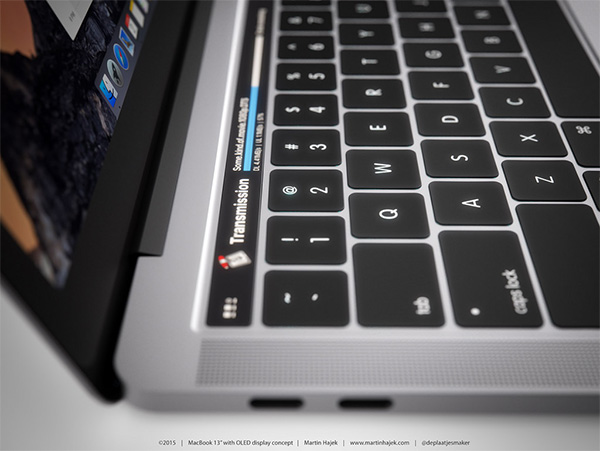It’s always extremely interesting and entertaining watching Apple’s executive team take to the WWDC stage to present all of the notable changes in the company’s major software platforms. Those announcements give us an insight into what’s about to imminently arrive on our devices.
However, what can actually be sometimes more interesting, is finding the things that Apple doesn’t announce by digging into the codebase and accompanying release notes. As is always the case, that level of investigation has once again revealed some interesting potential insights in the future of the MacBook range.

It was recently reported that Apple was planning on revamping its MacBook range by introducing an OLED touch bar in place of the current function key that allow quick access to certain features and functionality.
Those reports also alluded to the possibility of the Cupertino-based company adding support for biometric detection and authentication via Touch ID. Now, it seems that Apple’s API differences webpage may have given the game away by making references to a number of resources that could have been put in place to support those technologies going forward.
As an example, the macOS Sierra codebase contains the addition of “KHIDUsage_LED_DoNotDisturb“, which 9to5Mac is suggesting could relate to the addition of a dedicated Do Not Disturb function on the new OLED touch bar. Existing Macs already have access to the excellent Do Not Disturb feature, but it’s buried away in a settings panel of Notification Center. Not exactly the most intuitive location for it. If the new resource points to what we think it is, then it looks as though this could be a simple touch away to activate, like many other macOS Sierra features.
The macOS Sierra codebase also seems to give the Touch ID game away by having multiple references to biometric input taps, such as ‘KIOHIDBiometricDoubleTapTimeOutKey‘. A similar hint toward biometric integration was found in iOS 7 beta codebase not long before Apple actually introduced Touch ID on iPhones.
It would appear that the same plans are in place to support this feature on upcoming MacBook Pro models. One thing to remember is that just because these resources have been put in place, it doesn’t necessarily mean that they will make it into the next-generation of MacBooks, or at all for that matter.
We’ll be sure to bring you more on this as it becomes available.
[Top image via: MacBook Pro 2016 concept by Martin Hajek]
You may also like to check out:
You can follow us on Twitter, add us to your circle on Google+ or like our Facebook page to keep yourself updated on all the latest from Microsoft, Google, Apple and the Web.
